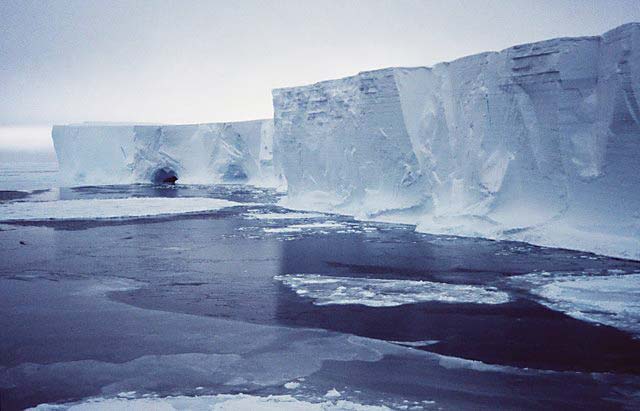
An array of underwater cameras, moorings and sensors will be deployed at the Mertz Glacier in east Antarctica this summer for the first time since a major iceberg calving event.
In January last year, 78 kilometres of the Mertz Glacier tongue broke off after being hit by another 97 kilometre-long iceberg.
A team of nearly 40 Australian and international scientists will depart Hobart today on the Aurora Australis for a month-long voyage to the glacier to measure the impacts of the calving event.

Voyage Leader and Oceanographer with the Antarctic Climate and Ecosystems Cooperative Research Centre, Dr Steve Rintoul, said the Mertz Glacier region is one of the few places in the ocean where dense, salty water forms at the surface and sinks 4 or 5 kilometres to the sea floor.
“This sinking of dense water near Antarctica is a key link in a network of ocean currents that influences global climate patterns,” Dr Rintoul said.
“One goal of the expedition is to see how the calving of the large ice tongue has affected the formation of dense bottom water in the region,” Dr Rintoul said.
The expedition will also measure how much carbon dioxide is being stored by the ocean.
“The ocean slows the rate of climate change by soaking up some of the carbon dioxide emitted by human activities, but this is gradually making the ocean more acidic affecting the ability of some organisms to form shells or other hard structures like reefs to develop,” Dr Rintoul said.
“Scientists on board will measure the impact of ocean acidification on phytoplankton, the base of the Southern Ocean food chain.”
The Australian Antarctic Division’s Acting Chief Scientist, Dr Martin Riddle, said the area around the glacier is also one of the ‘biological hotspots‘ of the Antarctic and Southern Ocean ecosystem.
“Biological productivity is high in the region, attracting whales, penguins and seals to feed on plankton in one of the few areas not covered by ice in the Antarctic winter,” Dr Riddle said.
“On the voyage, underwater cameras will be deployed to explore the ocean floor in the area previously covered by the glacier tongue,” he said.
“I expect to see new and unusual animals on the sea-floor as the area has been covered by ice hundreds of metres thick for about 80 years – this is a once in a life-time opportunity to discover what lives in these inaccessible places under the ice.”
The expedition is the latest in a series begun in 1991 to assess how and why the Southern Ocean is changing.
“By comparing our new measurements to earlier observations, we will determine how the temperature, salinity and circulation of the Southern Ocean is changing,” said Dr Rintoul.
“This information will help us track how rapidly climate is changing and help us improve projections of future change.”
The Aurora Australis will return to Hobart in February.
Press Release: Australian Antarctic Division, 4th January 2011, www.antarctica.gov.au









